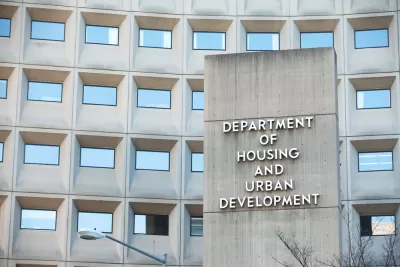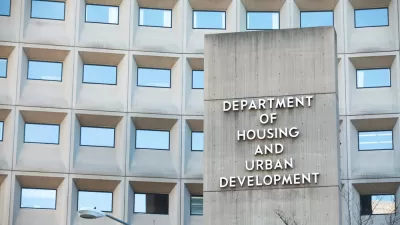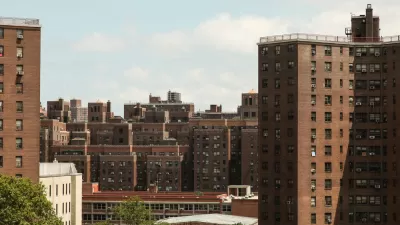Efforts by the U.S. Department of Housing and Urban Development to "purge" undocumented immigrants from public housing would hurt a lot of legal residents and citizens.

The U.S. Department of Housing and Urban Development (HUD) published a proposed rule on the Federal Register this week that attempts to verify the eligibility status of people receiving housing assistance from the federal government—i.e., tightening regulations against undocumented immigrants.
HUD Secretary has said the rule is necessary to "make certain our scarce public resources help those who are legally entitled to it."
According to analysis of the proposed rule by Tracy Jan for The Washington Post, a lot of people who are legally entitled to public resources will lose assistance as a result of the rule change. In fact, the agency's own analysis, as printed in the proposed rule, admits that "half of current residents living in households potentially facing eviction and homelessness are children who are legally qualified for aid."
"Current rules bar undocumented immigrants from receiving federal housing subsidies but allow families of mixed-immigration status as long as one person — a child born in the United States or a citizen spouse — is eligible. The subsidies are prorated to cover only eligible residents."
The new rule would require every member of the household to be "of eligible immigration status."
"Approximately 25,000 households, representing about 108,000 people, now living in subsidized housing have at least one ineligible member, according to the HUD analysis," according to Yan. 55,000 of that total are children.
Yan points out that the effect of the proposed rule would be contrary to the Trump administration's goals for shortening the waiting lists for housing assistance. A Twitter thread by Diane Yentel, CEO of the National Low Income Housing Coalition, also digs into the effects of the proposed rule, as described HUD's own documentation of the proposed rule.
FULL STORY: HUD says 55,000 children could be displaced under Trump plan to evict undocumented immigrants

Maui's Vacation Rental Debate Turns Ugly
Verbal attacks, misinformation campaigns and fistfights plague a high-stakes debate to convert thousands of vacation rentals into long-term housing.

Planetizen Federal Action Tracker
A weekly monitor of how Trump’s orders and actions are impacting planners and planning in America.

San Francisco Suspends Traffic Calming Amidst Record Deaths
Citing “a challenging fiscal landscape,” the city will cease the program on the heels of 42 traffic deaths, including 24 pedestrians.

Adaptive Reuse Will Create Housing in a Suburban Texas Strip Mall
A developer is reimagining a strip mall property as a mixed-use complex with housing and retail.

Study: Anti-Homelessness Laws Don’t Work
Research shows that punitive measures that criminalized unhoused people don’t help reduce homelessness.

In U.S., Urban Gondolas Face Uphill Battle
Cities in Latin America and Europe have embraced aerial transitways — AKA gondolas — as sustainable, convenient urban transport, especially in tricky geographies. American cities have yet to catch up.
Urban Design for Planners 1: Software Tools
This six-course series explores essential urban design concepts using open source software and equips planners with the tools they need to participate fully in the urban design process.
Planning for Universal Design
Learn the tools for implementing Universal Design in planning regulations.
Heyer Gruel & Associates PA
JM Goldson LLC
Custer County Colorado
City of Camden Redevelopment Agency
City of Astoria
Transportation Research & Education Center (TREC) at Portland State University
Jefferson Parish Government
Camden Redevelopment Agency
City of Claremont





























